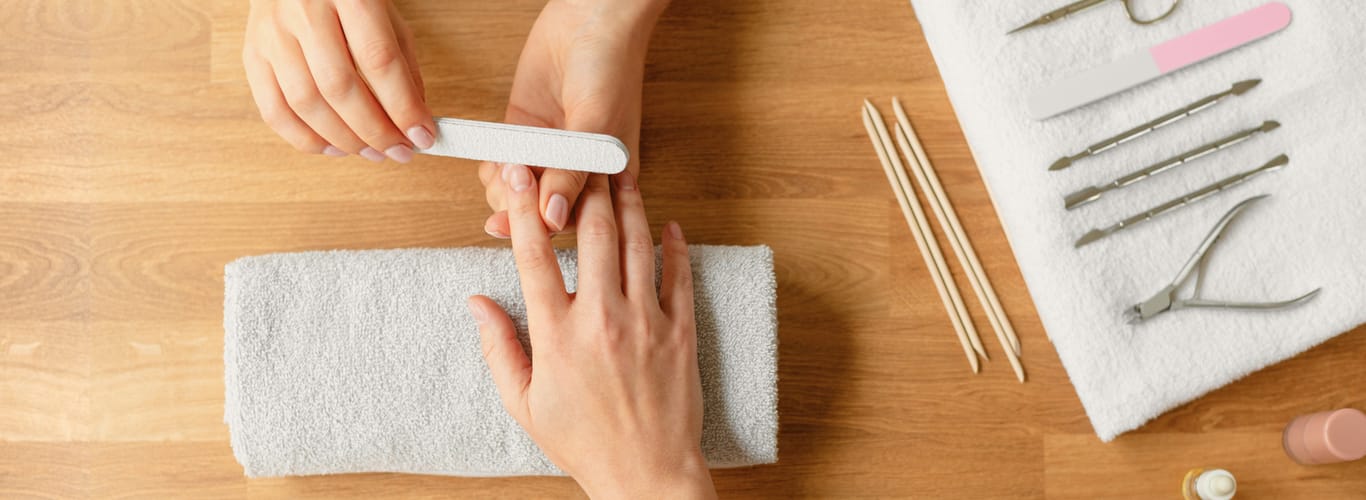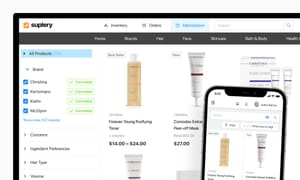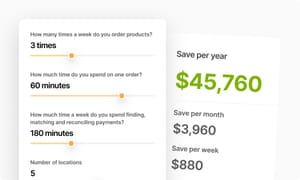Cost to open a nail salon in 2025 | Expenses guide
Loading the Text to Speech Player...
The beauty industry in the United States is experiencing a remarkable boom. In particular, mono-businesses such as eyelash and eyebrow studios, makeup studios, and nail salons have gained immense popularity.
If you find yourself reading this article, you've probably thought about starting a nail salon and are interested in the real expenses involved. In this comprehensive guide, I will answer your questions, like “How much does it cost to open a nail salon?” or “How much money do I need to open a nail salon?”. Let's start!
What does it take to start a nail salon, and how much will it cost?
The costs of opening your salon will depend on factors like the size of your operation, whether you rent or own, location, state regulations, personal preferences, and a lot of other small but valuable things. As you proceed, you'll need to answer these questions to determine the expenses involved.
So, let's delve into the intricacies of opening a nail salon and explore the various elements that contribute to its cost.
Create a thriving nail salon!
Dream of a booming nail salon? Our nail salon business plan delivers expert strategies to build a profitable business from the ground up. Download now — make your vision a reality!
Oh no! We couldn’t subscribe you ☹️
Done! We've sent a link to your Email 📨
Securing the perfect business space: lease or purchase?
When it comes to establishing your business, one of the critical decisions owners will face is finding the ideal location. Luckily, they have two compelling options to consider: leasing or purchasing the perfect space. Each choice comes with its own set of advantages and considerations, so let's explore them.
Leasing: the flexible and capital-friendly approach
Leasing a space offers unparalleled flexibility and requires less upfront capital compared to purchasing. This approach involves entering into a rental agreement with a property owner or landlord for a specific duration. The cost of leasing primarily depends on factors such as location, size, and demand for commercial properties in the area.
There are also additional expenses like security deposits and monthly rent. These costs may fluctuate based on market rates and the amenities offered by the property.
Purchasing: a solid investment for long-term stability
On the other hand, purchasing a nail salon space offers the benefits of long-term stability and potential investment opportunities. Although it requires a significant upfront investment, the advantages can outweigh the initial costs
The cost of purchasing a nail salon space is influenced by location, size, condition, and the state of the real estate market. While it may require a more substantial financial commitment initially, owning the property can prove to be a lucrative investment in the long run. Not only does it eliminate the uncertainty of rising lease costs, but it also allows for building equity and potentially generates additional income by renting out other spaces within the property.
Here are some examples of the cost of renting and buying at different rates
| Option | New York City, NY | Los Angeles, CA | Dallas, TX |
|---|---|---|---|
Leasing | The monthly rent for a small to medium-sized nail salon space can range from $5,000 to $50,000 or more, depending on the neighborhood and amenities. The lowest price starts with salon booths, the range can be from at least $250 to $1,200 per month for a booth. Location is the main reason for this variation. Higher end rent districts like Manhattan can even charge up to $1,000 per week for booth rentals. | In popular neighborhoods like Beverly Hills or West Hollywood, the monthly rent for a nail salon space can range from $5,000 to $15,000 or more. | In desirable areas like Downtown Dallas or Uptown, monthly rent for a nail salon space can range from $3,000 to $7,000. |
Purchasing | Buying a commercial property for a nail salon in New York City can cost anywhere from $500,000 to several million dollars, depending on the location and property size. | Buying a commercial property for a nail salon in Los Angeles can cost between $500,000 and over a million dollars, depending on the area and property condition. | Buying a commercial property for a nail salon in Dallas can cost between $300,000 to $800,000, depending on the location and property size. |
Renovation and remodeling costs: transforming your nail salon for future success
The costs associated with renovation and remodeling will depend on the specific requirements and desired level of customization. Here are some estimated ranges for reference:
- Minor Remodeling: For those seeking minimal changes such as fresh paint, minor repairs, and updated aesthetics, the cost can range from $5,000 to $20,000. This budget-friendly option allows for a quick and refreshing update to attract customers.
- Moderate Remodeling: More significant changes to the layout, flooring, lighting, and plumbing, expect costs ranging from $20,000 to $50,000. This level of investment can enhance the salon's appeal and create a more inviting atmosphere for future clients.
- Extensive Remodeling: For a complete overhaul, including structural modifications and high-end finishes, the cost can range from $50,000 to $100,000 or more. This substantial investment is geared towards creating a stunning and luxurious space that will impress both customers and potential investors.
It's important to note that these figures are approximate and can vary based on individual circumstances, market conditions, and the specific scope of the renovation project. Consulting with contractors, designers, and local experts will provide more accurate estimates tailored to your chosen location and requirements.
Navigating administrative costs when opening a nail salon in the USA
Aspiring entrepreneurs venturing into the world of nail salons must carefully consider the administrative costs associated with establishing and operating a business. These costs encompass vital aspects such as state and local business licenses, health and insurance coverage, as well as engaging professional services from legal counsel and consultants. In this section, I delve into the specifics of these administrative expenses, providing an overview of potential costs in each category for 2025.
- State and local business licenses: Acquiring the necessary licenses from state and local authorities is an essential step in setting up a nail salon. These licenses typically incur fees that can range from $500 to $2,000, depending on the location and specific requirements.
- Liability insurance: Protecting your business from potential risks and claims is crucial. Liability insurance acts as a safeguard against accidents, damages, or lawsuits. Annual costs for liability insurance can vary between $500 to $2,000, taking into account coverage options and the scale of the salon.
- Legal services: Seeking professional legal counsel specializing in business and employment law can provide invaluable guidance throughout your salon's journey. Legal fees will vary based on the complexity of your requirements and the rates of the attorney engaged. A reasonable estimate for the cost of legal services would be between $1,000 and $5,000, or higher. The amount of compensation depends heavily on the number of hours worked because lawyers are hourly workers.
- Consultants: Engaging the expertise of consultants, be it in marketing or business strategy, can greatly enhance various areas of your salon's operations. Depending on the scope and duration of the consultancy, expenses can range from $1,000 to $10,000 or more, offering tailored guidance to maximize your salon's potential.
Accounting for administrative costs, the total budget required for a nail salon venture may range from approximately $2,200 to $19,500 or beyond. By meticulously considering these administrative costs during financial planning, you can establish a solid foundation for your nail salon venture, setting the stage for a successful and well-prepared business endeavor.
Salon equipment and furniture expenses
Embarking on the exciting journey of opening a nail salon requires careful planning and financial considerations. One crucial aspect to consider is determining the budget needed to acquire the necessary equipment. In this essay, we will delve into the key items required for a nail salon and provide examples of their associated costs in the USA for 2025.
Key equipment Items for a nail salon:
- Manicure and Pedicure Stations: These stations form the heart of any nail salon. A basic manicure station typically costs between $300 and $600, while a pedicure station ranges from $500 to $1,200. However, for those seeking a more luxurious and technologically advanced experience, upscale options can surpass $2,000 per station.
- Nail Drying Lamps: Nail drying lamps are essential for curing gel polishes. Prices for these lamps vary between $50 and $150 per unit, depending on the brand and features they offer.
- Nail Care Tools and Equipment: This category encompasses nail files, buffers, cuticle pushers, and nail clippers. Costs fluctuate based on the quality and quantity required. On average, expect to invest around $100 to $300 for a comprehensive set of professional-grade tools.
- Nail Polishes, Gels, and Acrylics: Building a diverse collection of nail colors and products is crucial for a nail salon. Expenses for nail polishes, gels, and acrylics depend on the brands, quality, and desired quantity. A starting inventory can range from $500 to $2,000 or more, depending on the range of options you wish to offer.
- Sanitation and Disposable Supplies: Maintaining cleanliness and hygiene is paramount in a nail salon. Sanitation and disposable supplies like cotton balls, nail wipes, disposable files, and buffers are essential. Initial costs for stocking up on these items typically range from $100 to $300, depending on the size of the salon and its clientele.
Estimating the costs of purchasing equipment for a nail salon in the USA involves considering factors like location, size, and preferences. The investment required can vary significantly. For a smaller-scale salon, the minimum investment is around $1,000 to $2,000, while a mid-range investment falls between $5,000 to $10,000. Careful planning and budgeting ensure a successful and well-equipped venture.
Nail salon staffing costs: essential considerations for success in 2025
In the ever-growing nail salon industry, understanding and managing staffing costs are crucial for the successful launch and operation of a salon. From hiring skilled manicure technicians to planning for future expenses, savvy salon owners must navigate the intricacies of staffing costs to ensure profitability and employee satisfaction.
Hiring manicure technicians and salon staff:
When opening a nail salon, finding and hiring talented manicure technicians and salon staff is paramount. The average cost of hiring a full-time manicure technician can range from $25,000 to $40,000 annually, depending on their level of experience and location. Additionally, salon owners should consider recruiting other essential staff, such as receptionists and salon assistants, with salaries typically ranging from $20,000 to $30,000 per year.
Savings for wages and employee benefits
Before opening a salon, it is crucial for owners to have sufficient savings to cover future expenses for wages and employee benefits. Setting aside an initial budget of approximately $30,000 to $50,000 is recommended to ensure smooth operations during the early stages. This reserve will cover payroll costs and provide a safety net for unforeseen expenses.
Other benefits, such as paid time off, retirement plans, and professional development opportunities, should also be factored into the overall staffing costs.
Careful planning and consideration of specific numbers and prices will enable nail salon entrepreneurs to thrive in the competitive market while providing exceptional services.
Key pre-opening marketing investments
Strategic planning and effective marketing play a pivotal role in ensuring a triumphant business launch. In this section, I'll delve into the indispensable marketing expenses that nail salon owners should incorporate into their budget to entice customers and lay a robust foundation for long-term prosperity.
Setting the marketing budget
Before unveiling a nail salon, allocating resources for marketing is imperative. A general guideline suggests reserving 10-20% of the total startup budget for marketing expenses. For instance, if your overall budget is $50,000, dedicating $5,000 to $10,000 specifically for marketing allows you to skillfully promote your business and capture the interest of potential customers.
Crafting an irresistible brand
Establishing a captivating brand identity is fundamental to a nail salon's success. This entails creating an enchanting logo, which can cost between $500 and $2,000, depending on the complexity and expertise of the designer. Investing in professional graphic design services guarantees a visually stunning and unified brand image that resonates with the target audience.
The power of digital marketing
In today's digital age, a formidable online presence is paramount for any business. Allocating resources for website development, search engine optimization (SEO), and social media marketing is indispensable. Website development costs can vary between $3,000 and $10,000, depending on the complexity and functionality required. Investing in SEO services may range from $500 to $2,000 per month, while social media marketing campaigns can start at $1,000 per month. These investments amplify brand visibility and attract a continuous stream of clients.
Print and local advertising
While digital marketing is critical, traditional advertising methods should be considered. Allocating a portion of the budget for print materials, such as business cards, brochures, and flyers, can effectively promote the salon within the local community. Budgeting for print materials may range from $500 to $1,500, depending on the quantity and quality desired. Furthermore, investing in local advertising through newspapers, magazines, and community event sponsorships can further bolster brand visibility and entice customers in the target market. Costs for local advertising can vary widely based on the publication or event, ranging from $500 to $5,000 or more.
Thoughtful planning and prudent budgeting, considering these specific examples and amounts, ensure that the salon captivates the target audience and thrives in the fiercely competitive marketplace.
So, how much does it cost to open a nail salon overall?
In conclusion, opening a nail salon requires meticulous financial planning and consideration of various cost factors. On average, a budget-friendly salon may require an investment ranging from $15,000 to $50,000, covering essentials like rent, licenses, furnishings, equipment, and modest marketing efforts.
For those aspiring to establish a medium-scale salon with enhanced aesthetics and additional services, costs can range from $60,000 to $100,000. This includes higher-quality furniture, advanced equipment, staff training, and a more comprehensive marketing strategy.
Entrepreneurs envisioning an upscale salon offering a luxurious experience can expect expenses of $100,000 to $200,000 or more. This includes premium rent or purchasing location, upscale furnishings, cutting-edge equipment, highly skilled staff, extensive marketing campaigns, and a strong focus on exceptional customer service.
It's important to note that these cost estimates are approximate and subject to variation based on factors like location, salon size, and individual preferences. Thorough research, professional guidance, and a detailed budget are essential for accurately determining the specific costs of opening a nail salon aligned with your vision and target market.
The future of salon management
Dive into the world of automated orders and seamless warehouse accounting. Embrace the future today!
Try SupleryHow can I save money opening a nail salon?
Opening a nail salon can be a significant investment, but there are ways for entrepreneurs to save money while setting up their businesses.
Saving on tasks and maintenance
One effective strategy is to take a hands-on approach and do certain tasks yourself. For instance, you can handle some of the initial setup, like painting or decorating, instead of hiring professionals. Additionally, learning about the technical aspects of salon equipment and settings can help you save on maintenance and repair costs in the long run.
Cost-effective furniture solutions
When it comes to furniture, consider cost-effective options such as purchasing second-hand or refurbished items. You can also explore creative solutions like repurposing existing furniture or DIY projects to create a unique aesthetic. Don't hesitate to ask for help from friends or family members who may have skills in carpentry or design.
Social media savvy
To save on marketing expenses when opening a nail salon, consider taking a hands-on approach to social media. By managing platforms like TikTok yourself, you can effectively promote your salon for free. Create engaging content showcasing nail art trends, behind-the-scenes videos, and customer transformations. Engage with your audience, respond to comments, and collaborate with influencers or micro-influencers in your niche. Embrace the power of hashtags and challenges to increase visibility and attract a wider audience. By leveraging social media platforms personally, you can cut down on marketing costs while still effectively reaching potential customers and building a strong online presence for your salon.
Avoiding overspending and choosing the right suppliers
As an additional piece of advice, carefully manage your inventory. One common pitfall for new salon owners is overspending on inventory and purchasing from the wrong suppliers. Conduct thorough research to identify reputable suppliers that offer quality products at reasonable prices. Keep track of your inventory levels, anticipate demand, and only order what is necessary to avoid excess and potential losses.
That's where Suplery comes in. This cutting-edge inventory management software offers a range of powerful features that can transform the way you run your salon. With Suplery, you can say goodbye to the headache of stockouts and costly inventory mistakes, allowing you to focus on what matters most: growing your business.
Suplery's key benefits include:
- Preventing stockouts: Set personalized reorder points and receive timely notifications, ensuring you never run out of essential salon products.
- Optimizing inventory levels: Analyze real-time sales data to make informed decisions about purchasing and reduce unnecessary carrying costs.
- Streamlining ordering processes: Access a wide selection of top beauty suppliers and their products all in one place, simplifying your ordering procedures.
Suplery's intuitive interface makes it easy to get started and manage your inventory efficiently from day one!
Try Suplery now
Suplery gives you clear stock visibility, instant reorder alerts, and direct access to supplier savings — so your salon stays perfectly stocked, spends less, and earns more.
Start saving The latest articles and industry insights delivered to your inbox
The latest articles and industry insights delivered to your inbox
Subscribe to receive a monthly digest of our most valuable resources like blog posts, whitepapers, and guides.
Oh no! We couldn’t subscribe you ☹️
Done! You've subscribed 💛
Unsubscribe anytime. Your data is stored for business-to-business communication purposes. See our Privacy policy.
Frequently asked questions
How much does it cost to open a salon?
The cost to open a salon varies depending on factors such as location, size, and desired level of luxury. Budget-friendly salons may require an investment of $15,000 to $50,000, while medium-scale salons range from $60,000 to $100,000. Upscale salons can cost $100,000 to $200,000 or more. Expenses include rent, licenses, furnishings, equipment, staff training, and marketing efforts.
How profitable is a nail salon?
Nail salons can be profitable, with potential profit margins ranging from 15% to 25%. However, success depends on factors like location, competition, service quality, and effective marketing strategies.
How can I save money by opening a nail salon?
You can save money when opening a nail salon by doing certain tasks yourself, opting for cost-effective furniture and equipment, utilizing social media for free marketing, and carefully managing inventory to avoid unnecessary expenses.
Last updated on Jul 03, 2023
“What Changed” in this article? Everything. It's packed with the latest findings, the ripest data, and a fresh analysis you won't find anywhere else.
Please share this post
Table of Contents
What does it take to start a nail salon, and how much will it cost?Securing the perfect business space: lease or purchase?Renovation and remodeling costs: transforming your nail salon for future successNavigating administrative costs when opening a nail salon in the USASalon equipment and furniture expensesNail salon staffing costs: essential considerations for success in 2025Key pre-opening marketing investmentsSo, how much does it cost to open a nail salon overall?How can I save money opening a nail salon?Frequently asked questionsDifferentiate your SPA: creative 10 SPA marketing ideas
Cultivate client loyalty and elevate your SPA with these 10 innovative marketing strategies. From spa subscription boxes to AI-powered treatment plans, this guide empowers you to transform your business.
Salon marketing
8 min
Attract, retain, and delight: a guide to building your salon clientele
Today, simply offering quality services isn't enough. This guide explores data-driven personalization, silent appointments, eco-friendly practices, and more to help you elevate your client experience and build lasting loyalty.
Salon marketing
8 min
How to start a hair business with no money 2025 | Practice-based guide
Ready to start your hair business but don't have any money to invest? Our practice-based guide has everything you need to know - from finding suppliers and staff to opening your doors. Read and start acting!
Salon business
12 min
Unlock the secrets to beauty business success!
Join our community for insider tips on product management, marketing, sales and client attraction. Elevate your business with expert insights delivered straight to your inbox.
Oh no! We couldn’t subscribe you ☹️
Done! You've subscribed 💛
Trusted by the best in the beauty industry.
Transform your beauty business with Suplery!
Already enjoying our expert tips? Take the next step and join Suplery to revolutionize your business operations.
Huge range of professional products
One-click checkout after first order
Automated predictive orders
Seamless inventory management
From words to action
Start working with Suplery and explore all the tools and services you need to expand your business
Get started with Suplery24/7 Support
Secure payments
Designed by industry’s experts








